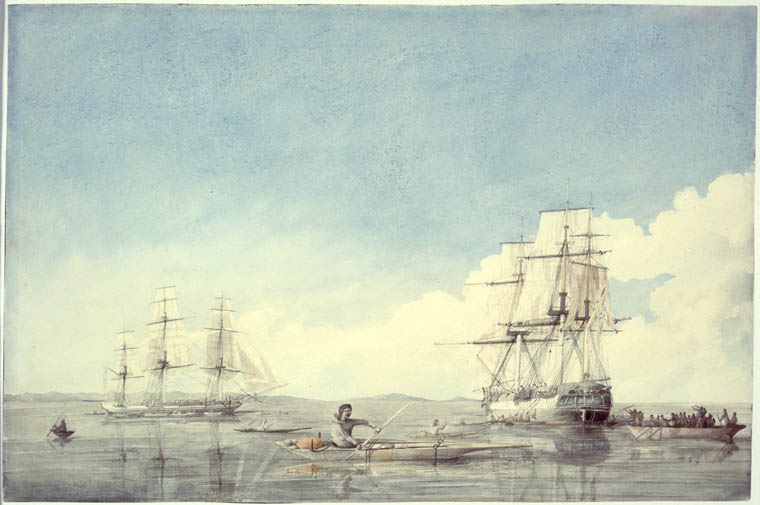Una de las entradas del diario de Robert Hood (de "To the Arctic by Canoe 1819-1820: The Journals of Robert Hood"-Clarence Stuart Houston) escrita a su llegada a York Factory en agosto de 1819 menciona la imposibilidad de que buques de más de 200 toneladas pudiesen aproximarse al nuevo emplazamiento del puesto comercial aguas arriba del rio Hayes.
 |
| Gjoa Haven |
 |
| Prince of wales_contact with Inuit people_from Wikipedia_By Robert Hood_1819 |
Hasta casi 100 años después cuando Amundsen, entre los años 1903 y 1906, precisamente con una embarcación diminuta el Gjo Haven de apenas 45 toneladas, fuera el primero en completar la travesía no se pondría de manifiesto lo acertado de la elección de este tipo de buques para semejante viaje.
Barcos como el HMS Erebus de 372 toneladas o el HMS Terror de 325 toneladas eran probablemente los barcos menos adecuados en cuanto a tonelaje para realizae el intento, aunque estaban ciertamente muy bien equipados en otros muchos aspectos.
One of the commentaries of the Robert Hood journal wrote at his arrival at York Factory in august 1819 mention the impossibility that ships of more tan 200 tons could approximate to the new emplacement of the trade fort upstream of the Hayes River.
In this commentary he mentions that it would be advisable using less heavy ships and more maneuverable between the ice floes and that they would be more appropiate to approach the load to the forts ascending by the mouth of the rivers. Although it seems that the Hudson Bay Company was already in the process of changing part of its fleet for ligther ships, it seems that nobody in the Admiralty shared this philosophy or heard them in order to supply with this kind of ships to the next expeditions.
It was not before 100 years after when Amundsen, since 1903 to 1906 precisely with a tiny ship, the Gjoa Haven of just 45 tons, was the first on completing the crossing when the things would be evident, the adecuacy of the decision to select this kind of ships to this kind of travels.
Ships like the HMS Erebus of 372 tons or the HMS Terror of 325 tons were, probably the less appropriate ships, concerning in weight, to try the passage, although they were certainly very well equiped in a lot of other aspects


No hay comentarios:
Publicar un comentario